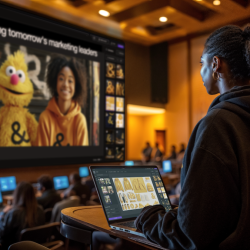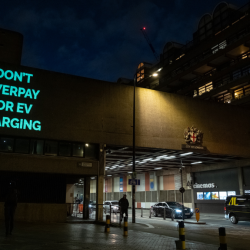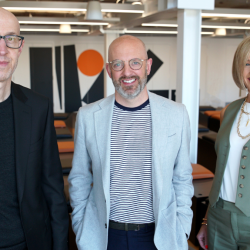Twenty years ago, The Sydney Morning Herald reported on the sci-fi action film Minority Report: “Tom Cruise walks past a line of moving, talking ads as he is courted by Guinness and Lexus to buy brews and cars. They know his name and all his particulars because their ads are triggered by iris-scanning. According to the group of US experts who acted as advisers to Steven Spielberg’s latest film, this is what advertising will be like in 2054.”
The Age of Possibility
This was the first age of addressable, or what I would explain as personalised communication at scale, which can be learnt from and optimised against. It was ‘The Age of Possibility’. Personalisation was a distant dream, instead being the pipeline construct of disparate technology forms, not a coherent and applicable concept. Opportunity was at its nascent stage, with one creative message for all audiences.
Still, the general sentiment in this era was that the seeds of Washington in 2054 were present in the increasingly pervasive, personalised internet ads that suggested future purchases based on previous buying preferences. It was evident in this first age, from the way the internet works, that the progression to a more enveloping and contextual advertising model was simply logical.
The Age of Intrusion
If it was clear then, it was HD-ready a decade later, marking the second stage of the addressable era, ‘The Age of Intrusion’. Addressable was further developed, and some creative variations were used, but they weren’t activated dynamically and primarily served to chase people around the web using third-party cookies.
Of course, using cookies is vastly different from chasing people via their actual eyeballs, as AMEX did with Tom Cruise. Still, targeting reached a whole new level of intimacy. In my own experience, I was stalked around the web by maternity bra shots when half the office didn’t yet know I was pregnant, and many a day was spent hand-waving to cover up a screen. Of course, it was around this time that Target infamously knew a teenage girl was pregnant before she did.
Many found this unsettling, and according to a study by Finecast, intrusion manifested itself in ‘feelings of mistrust, annoyance, and a sense of “big brother watching them”. Key pillars of this age included excessive frequency, unsophisticated retargeting and over-enthusiastic use of data.
The Symbiotic Age
Move on another decade, and we enter the present – I’m calling this ‘The Symbiotic Age’. This era has been born of a perfect storm, resulting in cookies disappearing and technologies improving. And more importantly, data owners and publishers are being held to greater scrutiny and online properties held to a higher account. We’re also more cognisant of the nuances in which a platform is consumed and the behaviours within it (rather than a one size fits all digital approach). Collectively, these forces strike a balance between welcome pursuit and relevance. In other words, a mutually beneficial symbiotic relationship between person and brand.
How is The Symbiotic Age developing?
There are critical components to building a symbiotic relationship: understanding the audience and where they are in their lives, and context – understanding where they are in their day and week and what appeals to them most.
On top of this, the number of available variables is increasing, meaning it’s possible to customise how we approach and interact with a customer. This appears more sensible – and based on a mutual understanding – rather than creepy (as with maternity bra-gate).
As marketers wield this information more effectively, consumers respond more positively. And ultimately, this is because people do want addressable communication. According to recent research, 76% of consumers are more likely to consider purchasing from brands that personalise.
Additionally, when addressed with relevant TV advertising, a separate study found that respondents liked addressable ads four times more than non-addressable ads, thanks to a combination of relevancy and big-screen quality.
But it’s more than that. Perhaps thanks to the build-up of previous ages, customers know what personalisation can look like, and they don’t just want it – they demand it. 71% of consumers expect personalisation from brands.
And the results speak for themselves. From a consumer perspective, addressable ads are more memorable. 74% of people remembered images from addressable ads vs 68% from non-addressable ads. And from a business perspective – and the all-important bottom line – 80% of companies report seeing an uplift since implementing personalisation.
The time is now to take advantage of The Symbiotic Age – and the age beyond it
Group M predicts that by 2025, 80% of all media will be addressable. This is no longer just a bottom-of-the-funnel option but an omnichannel opportunity, from audio to addressable TV. That means a holistic addressable offering that encompasses all areas of the operational chain from strategy through to execution is key to fine-tuning the balance between driving welcome pursuit and relevance.
Fortunately, there are some helping hands along the way. For example, ages before us have taught us that a better balance of first, second and third-party data – and supporting AdTech – will drive precision targeting, but in a way that doesn’t relate to the over-enthusiastic data approaches of old.
Whatever the next age holds, I have no doubt – just as Spielberg’s advertising advisers did all those years ago – that addressability will fuel the next era of media performance. It drives a deeper understanding of consumers’ relationships with brands and is the most effective way for them to drive business results.
Featured image: Minority Report (2002) – Amblin Partners
































